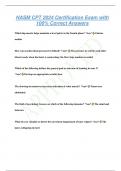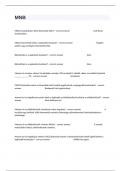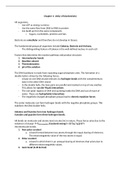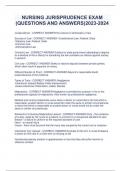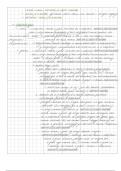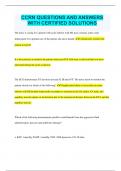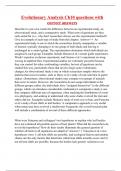Exam (elaborations)
MTTC History: Practice test Questions and Answers | 100% Pass
- Course
- Institution
MTTC History: Practice test Questions and Answers | 100% Pass Where was the first great human civilization located? - Answer️️ -The first great human civilization was the Sumerian civilization which was located in Mesopotamia. Mesopotamia encompasses the area between the Tigris and Euphrate...
[Show more]





